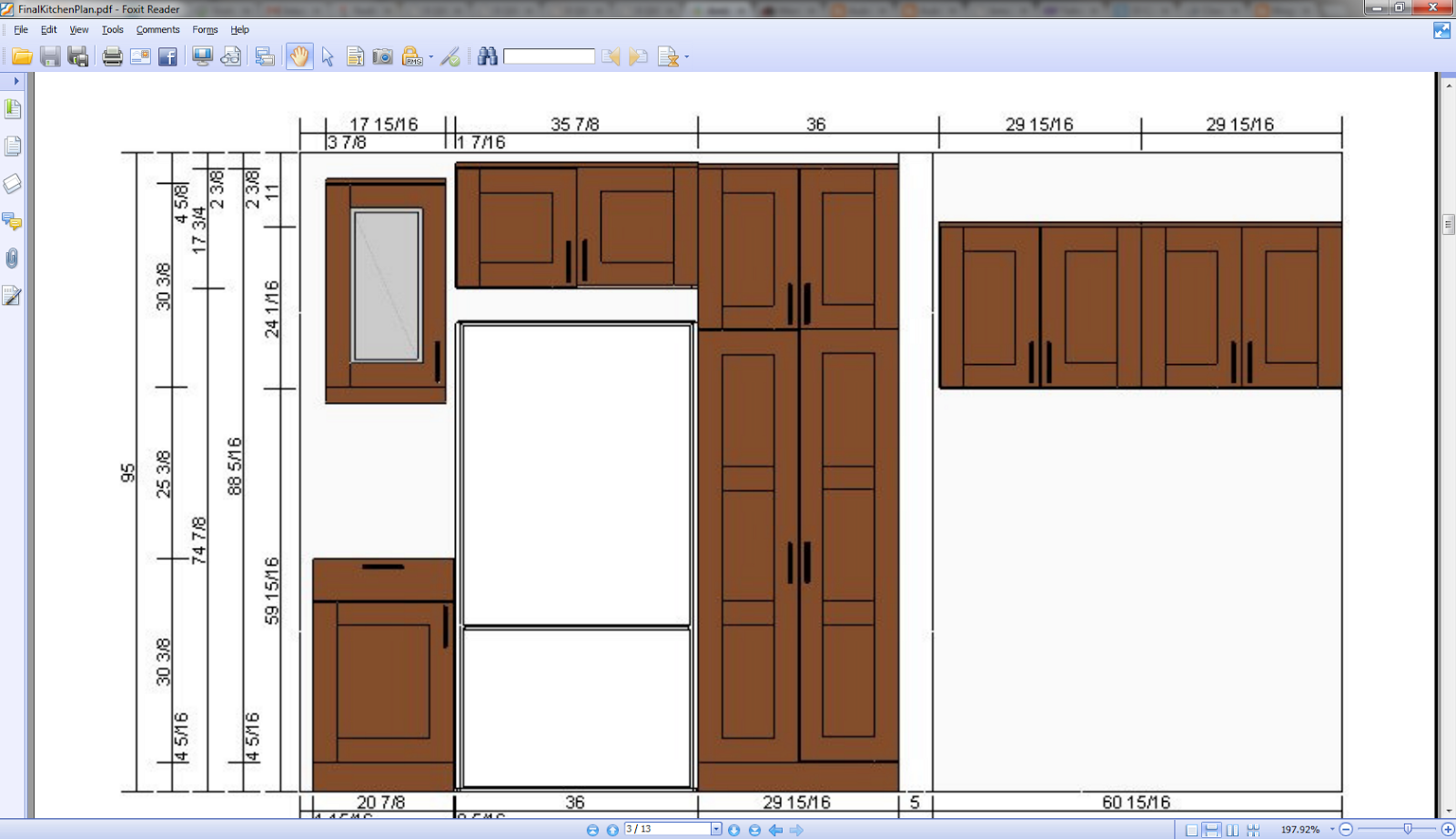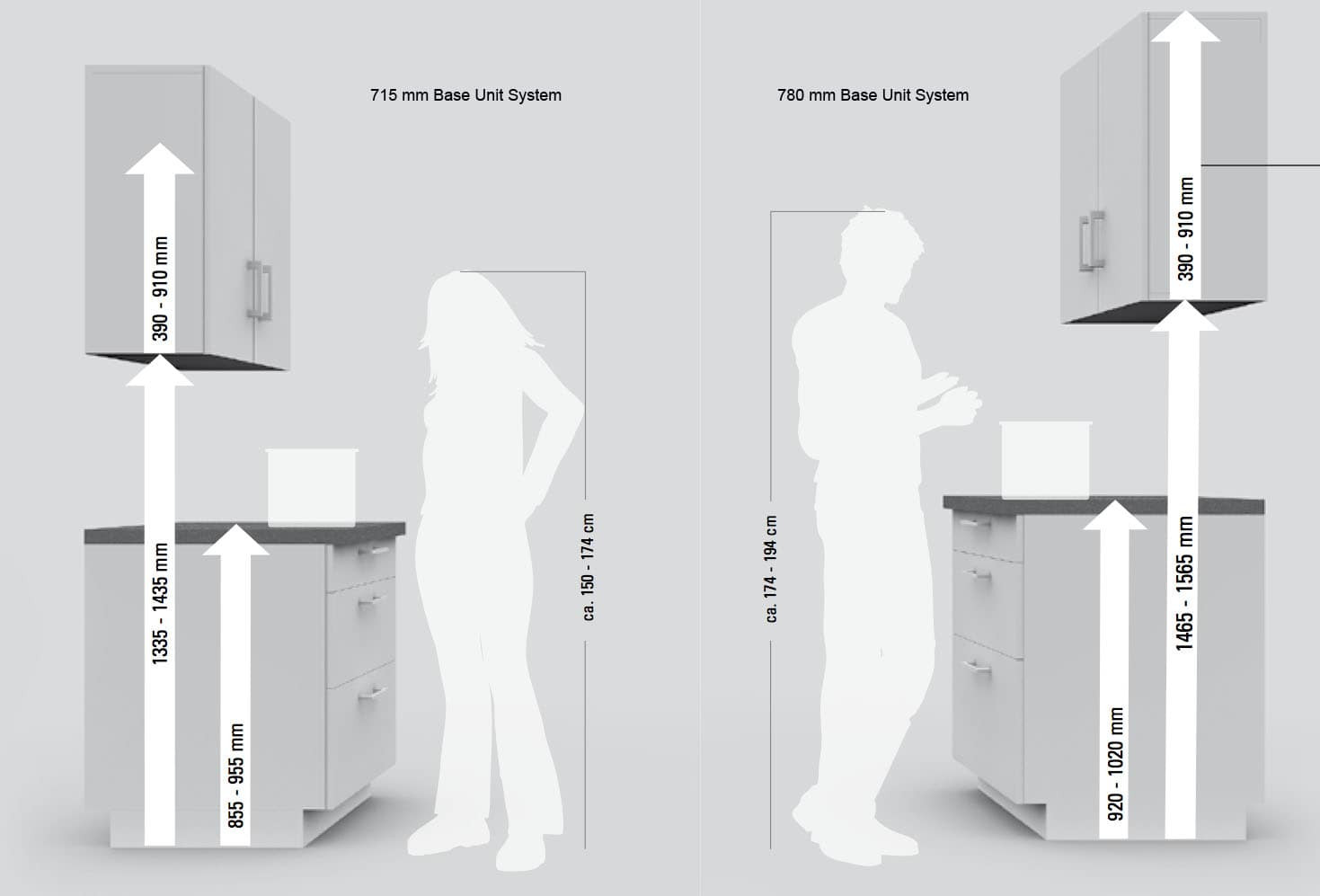Factors Influencing Cabinet Installation Level

The level at which you install your cabinets can significantly impact the functionality and aesthetics of your kitchen or bathroom. It’s not just about making sure the cabinets are level, but also about finding the right height for your needs and preferences.
Countertop Height
The countertop height is the most important factor to consider when determining the cabinet installation level. The standard countertop height is 36 inches, but this can vary based on the height of the homeowners and their personal preferences. A higher countertop might be more comfortable for taller individuals, while a lower countertop could be more accessible for shorter individuals. The cabinet installation level must be adjusted accordingly to achieve the desired countertop height.
Personal Preference
Ultimately, the optimal cabinet installation level depends on the personal preferences of the homeowner. Some individuals may prefer a higher countertop for easier food preparation or to accommodate their height. Others might prefer a lower countertop for easier access and better ergonomics. It’s important to consider your personal needs and preferences when deciding on the ideal cabinet installation level.
Accessibility Needs
Accessibility needs can also play a significant role in determining the cabinet installation level. Individuals with mobility impairments may require lower countertops for easier access. For example, someone who uses a wheelchair may prefer a countertop height of 34 inches or lower. It’s crucial to consider the needs of all individuals who will be using the kitchen or bathroom when deciding on the cabinet installation level.
Pros and Cons of Different Cabinet Installation Levels
There are pros and cons to different cabinet installation levels.
- Higher Cabinets: Higher cabinets can offer more storage space and a more spacious feel, but they can also be more difficult to reach and may not be suitable for everyone.
- Lower Cabinets: Lower cabinets can be more accessible for individuals with mobility impairments, but they may limit storage space and can make the room feel smaller.
Standard Cabinet Installation Levels: Best Level For Cabinet Installation

Cabinet installation levels are crucial for creating a functional and aesthetically pleasing kitchen. A well-installed cabinet system not only enhances the overall appearance but also ensures ease of use and longevity. This section will delve into the standard cabinet installation heights, providing a comprehensive overview of typical measurements and the rationale behind these guidelines.
Base Cabinet Heights
Base cabinets, the foundation of any kitchen design, are typically installed at a standard height of 34.5 inches from the finished floor to the top of the countertop. This height allows for comfortable access to countertops and facilitates ergonomic movement within the kitchen.
- The 34.5-inch height provides ample legroom for most individuals while maintaining a comfortable working distance from the countertop.
- This height is also conducive to using standard-sized appliances, ensuring that the countertop seamlessly integrates with kitchen equipment.
- The standard base cabinet height promotes a cohesive and balanced design, creating a consistent flow throughout the kitchen space.
Upper Cabinet Heights
Upper cabinets, typically installed above base cabinets, are designed to maximize storage space and offer convenient access to frequently used items. The standard height for upper cabinets is 18 inches from the countertop to the bottom of the upper cabinets, allowing for a comfortable clearance for reaching and retrieving items.
- This 18-inch clearance ensures that users can comfortably access the upper cabinets without the need for step stools or ladders.
- The standard height promotes efficient use of vertical space, maximizing storage capacity without compromising on accessibility.
- The 18-inch clearance also allows for adequate lighting under the upper cabinets, enhancing the overall functionality of the kitchen space.
Countertop Overhang
The countertop overhang, the portion of the countertop that extends beyond the base cabinet, is an important element in cabinet installation. A standard overhang of 1.5 inches is commonly recommended, providing ample space for hanging objects like mugs or towels and enhancing the visual appeal of the countertop.
- The 1.5-inch overhang creates a visually appealing edge, adding a subtle design element to the countertop.
- The overhang provides a convenient space for hanging objects, eliminating the need for additional storage solutions.
- This overhang also ensures adequate clearance for comfortable movement around the kitchen, preventing accidental bumps or collisions.
Cabinet Installation Height Recommendations, Best level for cabinet installation
| Cabinet Type | Recommended Height |
|---|---|
| Base Cabinets | 34.5 inches from finished floor to countertop |
| Upper Cabinets | 18 inches from countertop to bottom of upper cabinets |
Considerations for Custom Cabinet Installation Levels

While standard cabinet installation levels offer a convenient baseline, there are situations where custom heights become essential. These situations are often driven by unique architectural features, personal preferences, or specific functional requirements. Customizing cabinet heights can enhance the aesthetics, functionality, and overall user experience of your kitchen or bathroom space.
Factors Affecting Custom Cabinet Installation Levels
Customizing cabinet heights requires careful consideration of several factors that can influence the final design and installation. These factors can include:
- Ceiling Heights: In rooms with unusually high or low ceilings, standard cabinet heights may not be ideal. For example, in a room with a vaulted ceiling, you might opt for taller upper cabinets to maximize storage space while maintaining a balanced aesthetic. Conversely, in a room with low ceilings, you might choose shorter cabinets to avoid creating a sense of claustrophobia.
- Countertop Height: Countertop height is a crucial factor in determining the overall comfort and functionality of your kitchen or bathroom. Customizing cabinet heights allows you to adjust the countertop height to suit the needs of the users, whether they are tall or short. This ensures a comfortable and ergonomic workspace.
- Appliance Dimensions: The dimensions of appliances, such as refrigerators, ovens, and dishwashers, can influence cabinet heights. For instance, if you have a tall refrigerator, you may need to adjust the upper cabinet height to accommodate it.
- Architectural Features: Architectural features like beams, columns, or sloped ceilings can necessitate custom cabinet heights to seamlessly integrate the cabinets into the existing design. This ensures a cohesive and visually appealing look.
- Personal Preferences: Ultimately, personal preferences play a significant role in determining the desired cabinet heights. Some individuals may prefer higher countertops for easier access, while others may prefer lower countertops for a more intimate feel. Customizing cabinet heights allows you to tailor the design to your specific needs and preferences.
Challenges and Benefits of Custom Cabinet Installation Levels
Customizing cabinet heights presents both challenges and benefits that should be carefully considered:
- Challenges:
- Increased Cost: Custom cabinet installations often come with higher costs compared to standard installations. This is due to the additional design, fabrication, and installation time required.
- Potential for Errors: Custom installations require precise measurements and careful planning to ensure proper fit and function. Errors in measurements or design can lead to costly rework or even unusable cabinets.
- Limited Availability: Finding cabinet manufacturers who specialize in custom installations can be challenging. You may need to search for local artisans or specialized cabinet companies to meet your specific requirements.
- Benefits:
- Enhanced Functionality: Custom cabinet heights allow you to optimize storage space and create a more ergonomic workspace. This can be especially beneficial in kitchens and bathrooms where functionality is paramount.
- Improved Aesthetics: Custom cabinets can seamlessly integrate with your existing architectural features, creating a cohesive and visually appealing design. This can enhance the overall look and feel of your space.
- Increased Value: Custom cabinets can add value to your home by enhancing its aesthetic appeal and functionality. This can be particularly advantageous if you plan to sell your home in the future.
Designing Custom Cabinet Installation Levels
Designing custom cabinet installation levels involves a collaborative process between the homeowner, the cabinet manufacturer, and the installer. Here are the key steps involved:
- Consultation and Design: The process begins with a consultation to discuss your needs, preferences, and budget. The cabinet manufacturer will then create a custom design that meets your specifications and integrates seamlessly with your existing space.
- Precise Measurements: Accurate measurements are essential for ensuring a perfect fit. The cabinet manufacturer will take detailed measurements of your space, including ceiling heights, wall dimensions, and any existing features that may affect the design.
- Fabrication: Once the design is finalized, the cabinets are fabricated to your exact specifications. This may involve using specialized materials, finishes, or hardware to meet your specific needs.
- Installation: The final step involves the installation of the custom cabinets. This requires skilled professionals who can ensure that the cabinets are installed properly and securely.
Examples of Custom Cabinet Installation Scenarios
Custom cabinet installations can be applied in a wide range of scenarios to enhance the functionality and aesthetics of your space. Here are some common examples:
- Vaulted Ceilings: In rooms with vaulted ceilings, you can utilize taller upper cabinets to maximize storage space while maintaining a balanced aesthetic. This creates a visually appealing and functional design that takes advantage of the unique architectural feature.
- Low Ceilings: In rooms with low ceilings, you can opt for shorter upper cabinets to avoid creating a sense of claustrophobia. This creates a more open and inviting feel without compromising on storage space.
- Unique Architectural Features: Custom cabinets can be designed to seamlessly integrate with existing architectural features like beams, columns, or sloped ceilings. This ensures a cohesive and visually appealing look that complements the existing design.
- Accessibility Needs: Custom cabinet heights can be tailored to meet the needs of individuals with mobility challenges. For example, you can install lower countertops for easier access or create specialized storage solutions to accommodate specific needs.
- Personal Preferences: Custom cabinet heights allow you to personalize your space to your unique preferences. For example, you can adjust the countertop height to suit your height or create custom storage solutions that meet your specific needs.
Best level for cabinet installation – Nah, ngomongin level pas pasang kabinet, inget ya, penting banget pastiin rata dan kuat. Kalo lagi cari ide buat penyimpanan di kamar, cek aja bedroom storage cabinets with drawers yang banyak pilihannya. Nah, pas udah dapet kabinet yang pas, jangan lupa pastiin lagi levelnya pas ya, biar ga miring-miring dan tahan lama.
Yo, when you’re deciding on the best level for your cabinet installation, don’t forget to consider the overall style of your room! Take what’s my bedroom style quiz to get a better idea of what vibe you’re going for, then you can choose the perfect height for your cabinets to match the flow.
After all, you don’t want your cabinets looking like a sore thumb in your stylish space, right?
